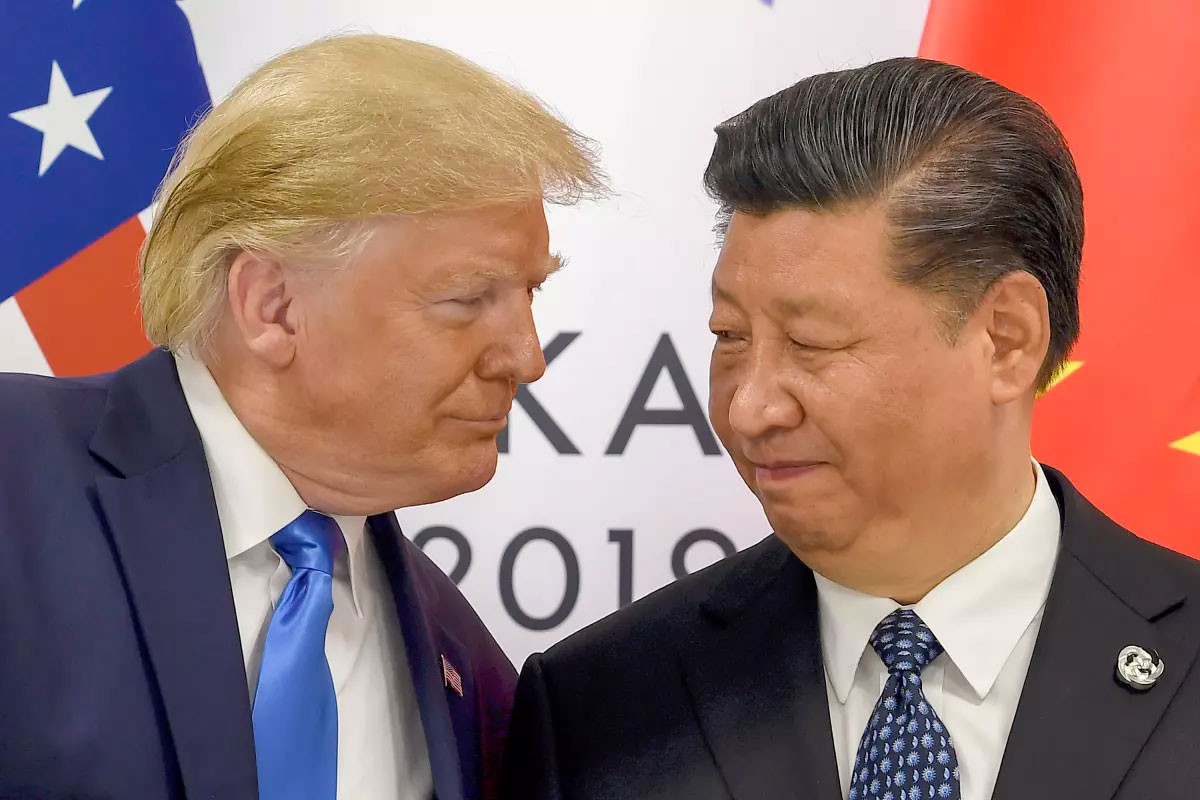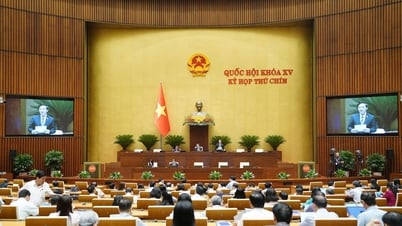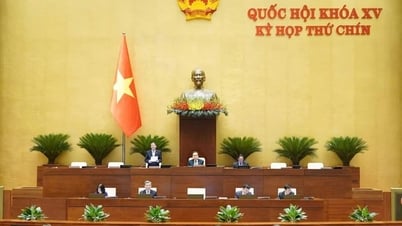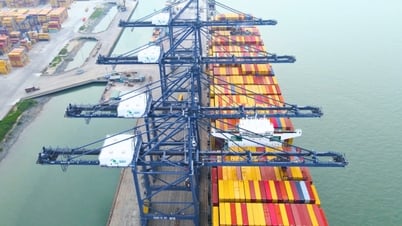Financial and commodity markets reverse
After the results of negotiations in Geneva (Switzerland) in the early afternoon of May 12 (Vietnam time), the US and China announced a temporary agreement to sharply reduce reciprocal tariffs for 90 days. This information caused strong fluctuations in the world's stock, foreign exchange and commodity markets.
Gold, considered a "safe haven asset" amid trade tensions, came under selling pressure immediately after the announcement.
As of 3:30 p.m. on May 12 (Vietnam time), the spot gold price fell more than $100, or more than 3%, to $3,225/ounce (equivalent to VND102.6 million/tael). This decrease marked the worst trading session for gold since the beginning of the year.
The decline in gold reflects optimism about a temporary trade deal that could ease geopolitical and trade tensions. The price of SJC gold in Vietnam fell by VND2 million/tael to VND120 million/tael (selling price).
In contrast to gold, the US dollar had a breakout session. The DXY index, which measures the strength of the US dollar against a basket of six major currencies, rose more than 1.4% to 101.75 points, recovering from a three-year low of 99 points.
The dollar’s rise was fueled by expectations that the US would strengthen its global trade and economic position after the deal. Investors also predicted that the US Federal Reserve (Fed) could maintain a steady interest rate policy, supporting the greenback.

Global stock markets reacted positively to the news of the interim deal. In the US, futures posted impressive gains immediately after Treasury Secretary Scott Bessent's remarks. S&P 500 futures rose 2.8%, Nasdaq 100 futures jumped 3.6%, while DJIA futures rose 2.3%.
The figures reflect investor optimism about the outlook for economic growth and corporate profits as tariff pressures ease.
In Asia, stock markets are also on the rise. Vietnam's VN-Index closed the session on May 12 with an increase of nearly 16 points, equivalent to 1.26%, reaching 1,283.26 points. Liquidity increased sharply.
Other markets such as the Nikkei 225 (Japan) and the Hang Seng (Hong Kong) also recorded increases of 1.5% to 2%, reflecting expectations that global supply chains, which are heavily dependent on China, will benefit from the tariff reduction.
In addition to gold, other commodities were also affected. Crude oil prices soared on expectations that demand from China and the US will increase as bilateral trade improves. WTI crude oil prices rose nearly 2.5% to over $62.5/barrel as of 3:50 p.m. (Vietnam time).
Meanwhile, steel and aluminum prices showed signs of stabilizing, as the US announced plans to seek independent supplies from allies in strategic industries.
These moves show that commodity markets are adjusting rapidly to the new outlook for global trade.
Interim agreement and world trade outlook
The interim deal between the US and China marks a turning point in efforts to ease trade tensions, which have escalated over the past 100 days since Donald Trump became US President for a second term.
Under the deal, the US agreed to reduce tariffs on Chinese goods from 145% to 30% within 90 days, while China reduced tariffs on US goods from 125% to 10%. These tariffs only apply to reciprocal tariffs that took effect on April 2. Individual tariffs, such as the US's 20% tariff related to the fentanyl issue, remain in place.
Over the next 90 days, the two sides pledged to negotiate a more lasting and equitable trade agreement. US Treasury Secretary Scott Bessent stressed that the agreement is a first step toward “balanced trade” between the two countries. In addition, the two sides have identified 5-6 strategic industries, including pharmaceuticals and steel, to restructure their supply chains and reduce interdependence.
In addition to tariff reductions, China pledged to delay or remove non-tariff barriers imposed on April 2, while the US stressed its plan to seek reliable supplies from its allies. However, the agreement did not address issues of exchange rates or manipulation.
While the interim deal is seen as a positive step forward, experts are cautious about the possibility of reaching a comprehensive trade agreement in 90 days. Some experts say that neither the US nor China is willing to compromise on strategic priorities, making a re-enactment of the “Phase One Trade Deal” of the Trump era unlikely.
In the short term, the deal will bring immediate benefits to global supply chains, especially in industries such as electronics, automobiles and pharmaceuticals. Reducing tariffs could help lower product costs, making American and Chinese goods more competitive in international markets.
However, the US trade deficit with China, which is expected to reach $361 billion by 2024, remains a major challenge.
In the medium to long term, the global trade landscape could see a sharper polarization. The US is pushing ahead with its supply chain “rebalancing” strategy, seeking independence in strategic sectors and strengthening cooperation with allies such as Japan, the EU, and India. Meanwhile, China could continue to consolidate its position in emerging markets through initiatives such as the Belt and Road.
The interim agreement between the US and China has raised hopes for a period of more stable cooperation between the countries. However, the future of US-China trade still depends on the upcoming negotiations and the ability of both sides to reconcile their strategic interests. In this context, financial and commodity markets are still potentially volatile, with opportunities and risks intertwined.

Source: https://vietnamnet.vn/my-va-trung-quoc-dat-thoa-thuan-thue-gia-vang-giam-sau-cac-thi-truong-but-pha-2400370.html




![[Photo] Prime Minister Pham Minh Chinh chairs conference on anti-smuggling, trade fraud, and counterfeit goods](https://vphoto.vietnam.vn/thumb/1200x675/vietnam/resource/IMAGE/2025/5/14/6cd67667e99e4248b7d4f587fd21e37c)

























































































Comment (0)